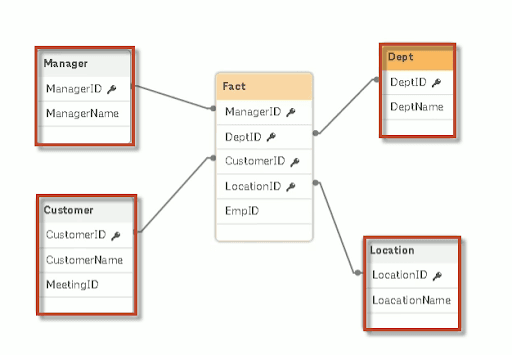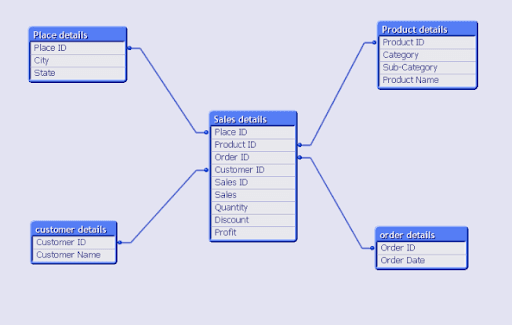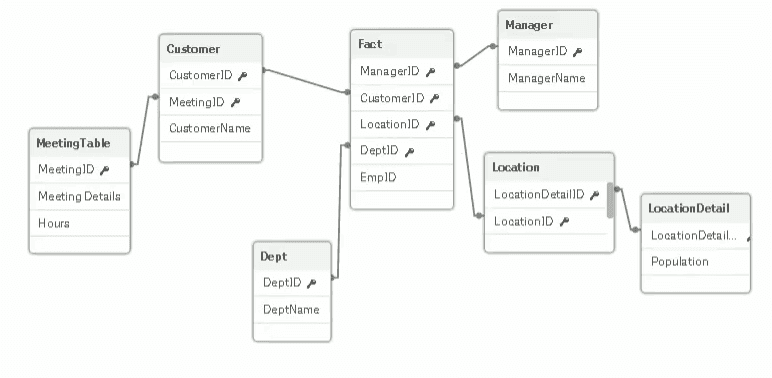- Snowflake Interview Questions and Answers
- Snowflake Tutorial
- Snowflake Architecture
- What is Snowflake Data Warehouse
- Snowflake vs Redshift - Which is the Best Data Warehousing Tool
- Snowflake vs BigQuery
- Snowflake Time Travel - A Detailed Guide
- What is a Snowflake Table & Types of Tables
- Snowflake vs Databricks
- Snowflake vs Azure
- Snowflake Vs Hadoop: What's the Difference?
- How to Insert Data in Snowflake
- Snowflake Connectors
- Snowflake Documentation - A Complete Guide
- How to Update Data in Snowflake?
- How to Delete Data in Snowflake
- How to Add a Default Value to a Column in Snowflake
- How to Add a Column in Snowflake
- How to Add a NOT NULL Constraint in Snowflake
- How to Alter a Sequence in Snowflake
- How to Create a Table in Snowflake
- How to Create a View in Snowflake
- How to create an Index in Snowflake
- How to Drop a Column in Snowflake
- How to Drop a Table in Snowflake
- How to Drop a View in Snowflake?
- How to Drop the Index in Snowflake
- How to Duplicate a Table in Snowflake
- How to Remove a NOT NULL Constraint in Snowflake
- How to Remove a Default Value to a Column in Snowflake
- How to Rename a Table in Snowflake
- How to Rename a Column in Snowflake
- How to write a Common Table Expression(CTE) in Snowflake
- How to Write a Case Statement in Snowflake
- How to Use Coalesce in Snowflake
- How to Query a JSON Object in Snowflake
- How to Truncate a Table in Snowflake
- How to Group by Time in Snowflake
- How to Import a CSV in Snowflake
- How to Query Date and Time in Snowflake
- How to Convert UTC to Local Time Zone in Snowflake
- How to Avoid Gaps in Data in Snowflake
- How to Have Multiple Counts in Snowflake
- How do we Calculate the Running Total or Cumulative Sum in Snowflake
- How to Round Timestamps in Snowflake
- How to Calculate Percentiles in Snowflake
- How to Compare Two Values When One Value is Null in Snowflake
- How to do Type Casting in Snowflake
- How to Get First Row Per Group in Snowflake
- Snowflake Cloning - Zero Copy Clone
- Snowflake Competitors and Comparisons
- Snowflake Integrations
- Snowflake Key Features
- Snowflake Tables and View Management
- Snowflake Advanced Querying & Analytics
- Snowflake SQL Functions & Conditionals
- Snowflake DML and Constraint Operations
Star schema and Snowflake schema - Overview
In QlikView, the relational database schemas are of two types. One is the Star schema and the other is the Snowflake schema. But, before going to learn the two different schemas, first, we should know what kinds of tables were used to store the data?
So, there are two types of tables:
- Fact table
- Dimension table
Fact table:
The Fact table is a table that contains numeric data or measurable attributes of data such as ID, keys, etc, that are connected with the dimension table across the data model. The fact table is placed at the center of the Star schema or the Snowflake schema bounded by dimension tables in a data model.
| If you would like to become QlikView Certified professional, then visit Mindmajix - A Global online training platform: " QlikView Certification Training Course ". This course will help you to achieve excellence in this domain. |
Dimension table:
The Dimension tables are those tables that consist of descriptive or textual attributes of data such as Product ID, Product name, Manager ID, Manager name, etc., Each dimension table describes the data of that particular table. For e.g., If a dimension table gives information about a product, it provides the data particularly on that product itself.
In the figure, the highlighted ones are the Dimension tables and the one which is connected with all the dimension tables is the Fact table. As a title of this article, we will learn What is a Star schema? What is a Snowflake schema? And What are the difference between them? Let’s get started.

| Related Article: QlikView Interview Questions and Answers |
What is Star Schema?
A star schema has a single fact table that connects with all the dimension tables based on their links. By its name, it resembles a star having a fact table at its center and surrounded by all dimension tables. It is known as a star schema because it represents the entity-relationship diagram between a Fact table and dimension tables that is where one fact table is connected with multiple dimension tables. In this schema, every dimension table contains a primary key but they will not have any parent table.
Data model:
A star schema data model consists of one main Fact table that is connected with multiple dimension tables through the primary keys. This type of schema is commonly used for Online Analytical Processing (OLAP) which provides high speed. The resulting star schema has a spoke, or hub, or a Star-like representation.
Simply, a star schema is a structure where through dimension tables are connected with the center situated Fact table. The fact table consists of foreign keys or the primary keys of all the dimension tables.
As shown in the figure, the center table (Sales details) represents the Fact tables, and tables connected across the fact table are the dimension tables (Product details, Place details, customer details, order details).

E.g. Star schema with details of sales as Fact table and other details regarding sales like Product details, place details, Customer details, and Order details as Dimension tables.
Advantages of Star schema
The advantages of the star schema are as follows:
-
A star schema reduces the time required to load a large amount of data into the database
-
It provides efficient navigation through data yet the dimension tables are joined to the fact table
-
Queries run faster in a star schema
-
It is designed to enforce the relation between accuracy and consistency of loaded data
Disadvantages of star schema
The disadvantages of the star schema are as follows:
-
It is not flexible in terms of analytical requirements as a normalized data model
-
Data integrity is not executed as well as it is a highly normalized database
What is a Snowflake Schema?
A Snowflake schema is an enhancement of a star schema where every point of a star multiplies into several points. As we know, in star schema each dimension is represented by a single dimension table, But in Snowflake schema, that dimension table is standardized into numerous lookup tables. That means a dimension table is further linked to the Sub dimension table through multiple links. It is used when the dimension table becomes very big.
In this schema, a dimension table will have one or more parent tables. The hierarchies are divided into distinct tables and these hierarchies assist to drive down the data from the top-most hierarchy to the bottom-most hierarchy.
| Related Article: Snowflake Basics |
Data model:
The Snowflake schema data model consists of one or more fact tables that are connected with multiple dimension tables as a star schema, and these dimension tables are further connected with the Sub dimension tables depending on the data scaling.
As shown in the figure below, the fact table is connected with all the dimension tables based on their primary keys and some of the dimension tables are further linked to the Sub dimension table.
Unlike star schema, the Snowflake schema organizes the data inside the database in order to eliminate the redundancy and thus helps to reduce the amount of data. This kind of schema is commonly used for multiple fact tables that were a more complex structure and multiple underlying data sources.

E.g. the fact table is connected with the Location table (Dimension table) and the Location table is further connected to the Location details table (Sub dimension table).
| Related Article: Data Warehousing Tool |
Advantages of the Snowflake schema
The advantages of snowflake schema are as follows:
-
It helps to increase flexibility
-
It improves query performance due to minimized disk storage requirement and connecting small lookup tables
-
It is easy to maintain
Disadvantages of the Snowflake schema
-
The disadvantages of the Snowflake schema are as follows:
-
Due to multiple tables query performance might be reduced
-
It is required to perform more maintenance efforts because of more lookup tables
| Explore QlikView Sample Resumes! Download & Edit, Get Noticed by Top Employers! |
Difference between Star schema and Snowflake schema
| Description | Star schema | Snowflake schema |
| Data model | Top-down approach | Bottom-up approach |
| Normalization/ Denormalization | The fact table and Dimension tables are in the Denormalized form. | The fact tables are in Denormalized form, but Dimension tables are in normalized form. |
| Ease of use | Easy to understand and low query rate. | It is a complex structure and not as easy to understand. |
| Ease of maintenance | It has redundant data and is less easy to maintain and change. | No redundancy. Hence, Snowflake is easier to maintain and change. |
| Dimension table | It contains only a single dimension table for each dimension. | It contains more than one dimension table for each dimension depending on the data. |
| Query performance | Less number of foreign keys and takes less time for execution. | More foreign keys and takes a long time for execution. |
| Joins | Less number of joins | More number of joins |
| Application | We can prefer the star schema when the dimension table has fewer rows. | We can prefer the snowflake schema when the dimension table is relatively big. So, this schema helps to reduce the size of the data. |
| Enroll and Get Certified Snowflake Training In Hyderabad Now!! |
Conclusion
In QlikView, the preferred schema is the star schema as it provides queries that run faster. The structure allows us to load large batches of data quickly. It is a flexible model and deals with complex scripts easily. It also provides good RAM consumption. But selecting a suitable schema depends on the quantity of data. In this article, we have learned the core details of Star schema and Snowflake schema. Hope you find relevant information.
Related Articles:
 On-Job Support Service
On-Job Support Service
Online Work Support for your on-job roles.

Our work-support plans provide precise options as per your project tasks. Whether you are a newbie or an experienced professional seeking assistance in completing project tasks, we are here with the following plans to meet your custom needs:
- Pay Per Hour
- Pay Per Week
- Monthly
| Name | Dates | |
|---|---|---|
| Snowflake Training | Nov 25 to Dec 10 | View Details |
| Snowflake Training | Nov 29 to Dec 14 | View Details |
| Snowflake Training | Dec 02 to Dec 17 | View Details |
| Snowflake Training | Dec 06 to Dec 21 | View Details |

Vinod Kasipuri is a seasoned expert in data analytics, holding a master's degree in the field. With a passion for sharing knowledge, he leverages his extensive expertise to craft enlightening articles. Vinod's insightful writings empower readers to delve into the world of data analytics, demystifying complex concepts and offering valuable insights. Through his articles, he invites users to embark on a journey of discovery, equipping them with the skills and knowledge to excel in the realm of data analysis. Reach Vinod at LinkedIn.











